分治&暴力求解最近点对问题 + 时间性能量化分析
Posted 帅气的黑桃J
tags:
篇首语:本文由小常识网(cha138.com)小编为大家整理,主要介绍了分治&暴力求解最近点对问题 + 时间性能量化分析相关的知识,希望对你有一定的参考价值。
Catalogue
1 Intro
本文旨在讨论分治和暴力在求解最近点对问题时的时间性能问题,关于解题部分不做过多讲解,只附上相关代码。
2 Problem
给定平面上N个点,找出其中的一对点的距离,使得在这N个点的所有点的对中,该距离为所有点对中最小的。
3 Time performance analysis
测试围绕模拟次数和集合S的规模大小两个维度进行展开进行测试,并分析时间复杂度。
其中集合S存放所有的点信息,S的规模大小即为点的个数
A. 当S大小为100时,采用100次和1000次模拟情况,以程序稳定性、单次耗时和总耗时为评价指标
a.蛮力法
在经过100次和1000次随机测试之后,可以发现大多数的程序单次耗时稳定在0.004s到0.005s之内。

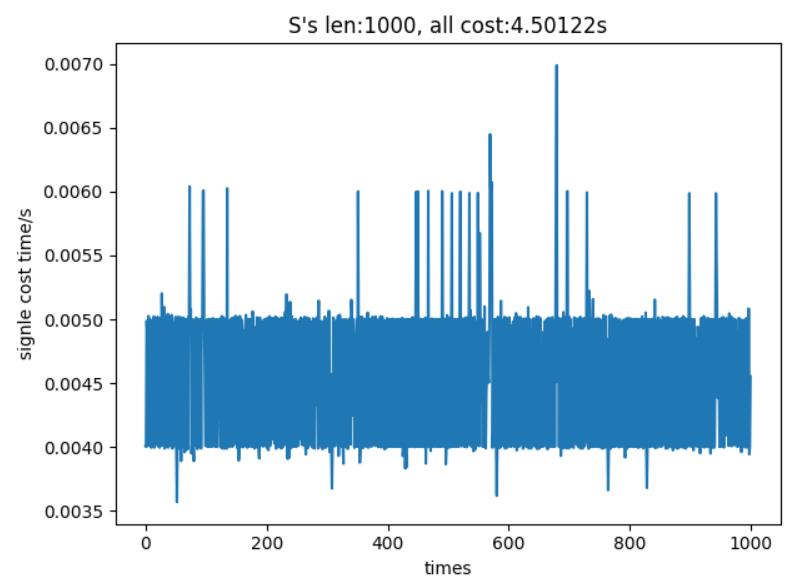
b. 分治法
在经过100次和1000次随机测试之后可以看出,大多数测试用例的单次耗时维持在0.01s~0.014s之间,但从总体的稳定性不如蛮力法,可以看出不同类型的测试用例对分治法的影响大于对蛮力法的影响。
从平均耗时可以看出,在S=100的数量级下,分治法的效果不如蛮力法。
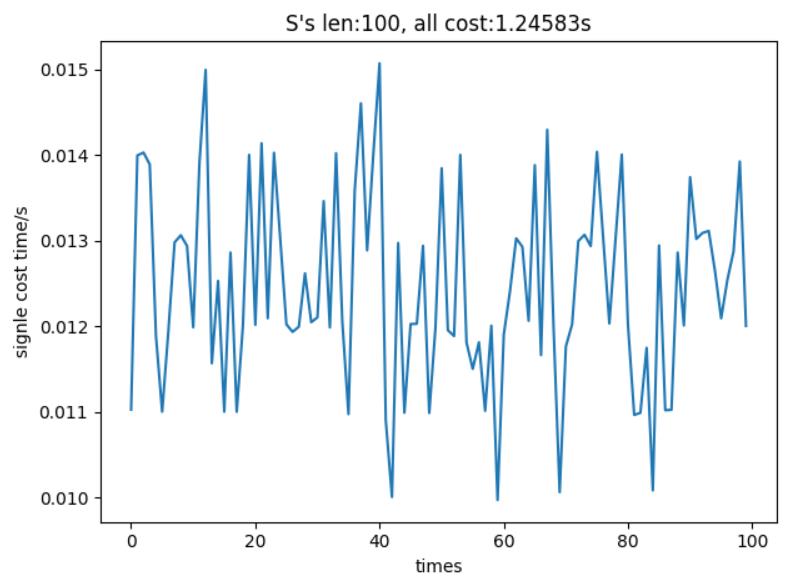

B. 当模拟次数固定为100时,采用len(S)=100和len(S)=1000进行模拟,以程序稳定性、单次耗时和总耗时为评价指标。
a.分治法
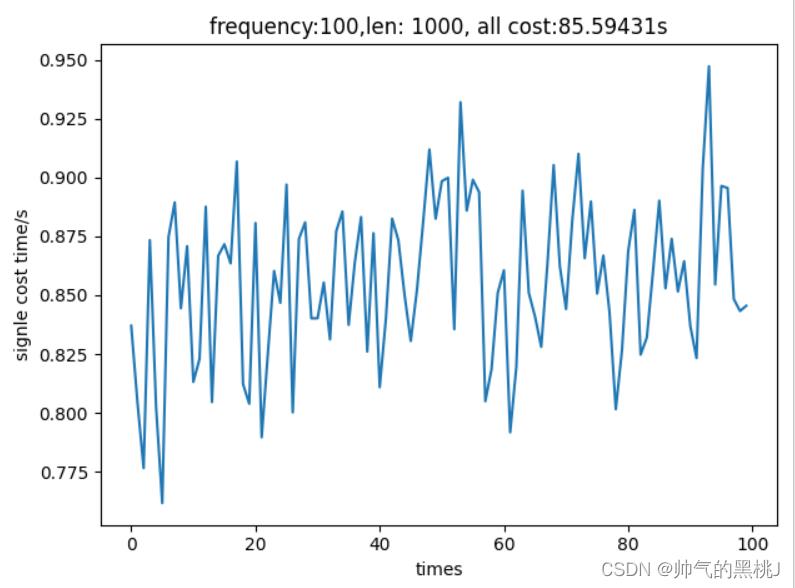
b.蛮力法
可以发现,在集合S由100变为1000之后,总体耗时增加了,最低耗时由之前的0.004s变为现在的0.44s,时间上的稳定性也下降了,但总体维持在合理的耗时区间内,较为稳定。
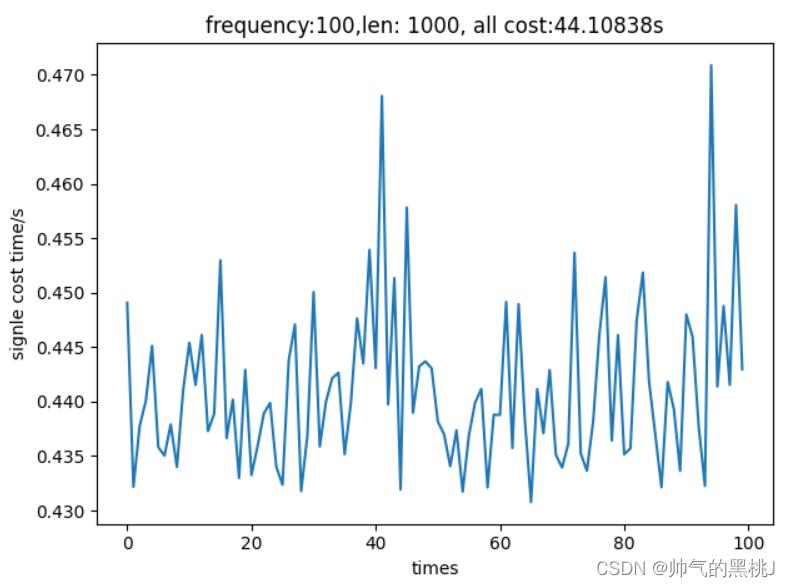
C. 时间复杂度分析
蛮力法
蛮力法需要两边for循环,因此时间复杂度为O(n^2),在实际模拟验证的情况下也确实如此,如下图所示。
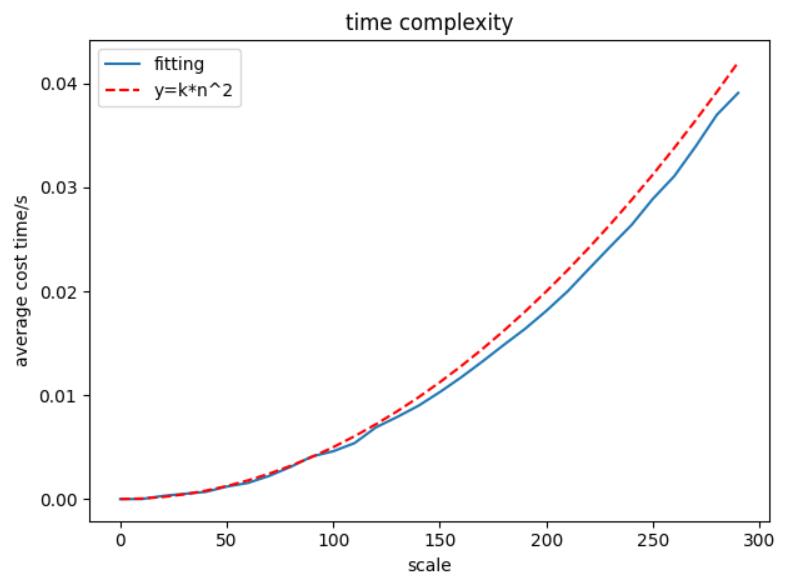
分治法
在程序的分治过程中,采用了O(nlogn)时间,程序中部分地方为预排序时间,不算在算法中。当n>3时满足递归方程 T(n) = 2T(n/2) + O(n),因此,有T(n)=O(nlogn)
事实上上面是理论分析,下面展现实际运行情况。
下图为1000次模拟时的分治法运行情况,说实话,我用了几种函数,并不能很好的拟合这种情况,原因有二:其一,测试规模过小,只有1000,但是事实上本人的计算机跑了1000次也花了几分钟时间,较为耗时,有兴趣的朋友可以尝试扩大数据的规模进一步的测试;其二,在测试规模没有达到一定程度时,时间复杂度最高阶部分的耗时并不能显著的体现出来,这也就是为什么这个曲线看起来奇奇怪怪的原因了。
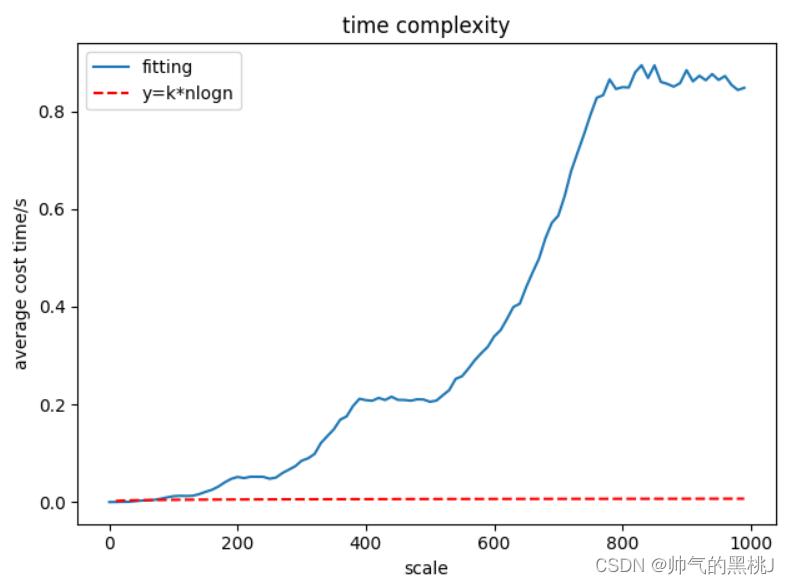
笔者在这里并没有做深入的时间性能分析,如果大家有更好的想法,欢迎提出来,想要分析部分的全部代码可以私聊笔者。
4 Solution
直接附上求解代码
分治法
代码如下所示:
import math
import time
class SolutionByDivide:
def find_nearest_direction(self, p: list):
start_time = time.time()
n = len(p)
p.sort()
min_dir, min_p = divide(0, n - 1, [], p, n)
return min_dir, min_p, time.time() - start_time
# 查找最接近的目标的y下标
def find_closed_index(collections, target):
n = len(collections)
low = 0
high = n - 1
mid = 0
while low <= high:
mid = math.floor((low + high) / 2)
if target > collections[mid][1]:
low = mid + 1
elif target < collections[mid][1]:
high = mid - 1
else:
return mid
return mid
def distance(p1, p2):
return math.sqrt(pow(p1[0] - p2[0], 2) + pow(p1[1] - p2[1], 2))
def divide(l, r, res, p, n):
if l == r:
return float("inf"), []
if (l + 1) == r:
return distance(p[l], p[r]), [p[l], p[r]]
mid = math.floor((l + r) / 2)
d1, res1 = divide(l, mid, res, p, n)
d2, res2 = divide(mid + 1, r, res, p, n)
if d1 >= d2:
d = d2
res = res2
else:
d = d1
res = res1
# 先将所有左子域、右子域、同一x值的中间子域,删选出来
left = []
right = []
midd = []
b = p[mid][0]
bl = b - d
br = b + d
for i in range(n):
if ((p[i][0] >= bl) & (p[i][0] <= b)) == True:
left.append(p[i])
if p[i][0] == b:
midd.append(p[i])
elif ((p[i][0] <= br) & (p[i][0] >= b)) == True:
right.append(p[i])
if len(right) == 0:
return d, res
# 将右子域先按照y值大小排好序
right.sort(key=lambda x: x[1])
# 遍历左子域中的每一个点,在右子域中寻找y值最邻近的四个点,求出最小距离以及最近点对
for i in range(len(left)):
closed_point = []
right_num = len(right)
if right_num <= 4:
closed_point = right
else:
index = find_closed_index(right, left[i][1])
if index >= 4:
start = index - 4
else:
start = 0
if index + 5 > len(right) - 1:
end = len(right) - 1
else:
end = index + 5
for j in range(start, end):
closed_point.append(right[j])
# 前四个就是右子域中离左子域最近的四个点
closed_point.sort(key=lambda x: abs(x[1] - left[i][1]))
if len(closed_point) >= 4:
end2 = 4
else:
end2 = len(closed_point)
for k in range(0, end2):
dist = distance(closed_point[k], left[i])
if dist < d:
res = [closed_point[k], left[i]]
d = dist
# 再在中间子域的内部进行比较,看看有没有x值相同,且距离最近的两个点
if len(midd) > 1:
midd.sort()
for j in range(len(midd) - 1):
dist = distance(midd[j], midd[j + 1])
if dist < d:
res = [midd[j], midd[j + 1]]
d = dist
return d, res
def single_test(ins):
p = [[0, 0], [1, 1], [3, 4], [0, 3], [3.2, 4.2], [0, -1], [-2, -2], [-1, -2], [0, 0.4], [-1, 2], [0, 2], [0.5, 2]]
min_dir, min_p, cost_time = ins.find_nearest_direction(p)
print('距离最小两个点为:', min_p[0], min_p[1])
print('距离为:', min_dir)
if __name__ == '__main__':
ins = SolutionByDivide()
# single instance
single_test(ins)
运行结果如下所示:

蛮力法
代码如下所示:
# -*- coding: utf-8 -*-
# @Time : 2022/10/20 15:56
# @Author : Zeeland
# @File : 最近点对点问题_暴力.py
# @Software: PyCharm
import math
import time
import random
import matplotlib.pyplot as plt
import numpy as np
class Solution:
def find_nearest_direction(self, p: list):
start_time = time.time()
n = len(p)
min_dir = float('inf')
min_p = []
for i in range(n):
for j in range(n):
if j == i:
break
dir = math.sqrt(math.pow(p[i][0]-p[j][0], 2) + math.pow(p[i][1]-p[j][1], 2))
if dir < min_dir:
min_dir = dir
min_p = [[p[i]], [p[j]]]
return min_dir, min_p, time.time() - start_time
def plot_analysis(historty_time: list):
plt.plot(list(range(len(history_time))), history_time)
plt.xlabel('times')
plt.ylabel('signle cost time/s')
plt.show()
if __name__ == '__main__':
# single instance
ins = Solution()
p = [[0, 0], [1, 1], [3, 4], [0, 3], [3.2, 4.2], [0, -1], [-2, -2], [-1, -2], [0, 0.4], [-1, 2], [0, 2], [0.5, 2]]
min_dir, min_p, cost_time = ins.find_nearest_direction(p)
print('距离最小两个点为:', min_p[0][0], min_p[1][0])
print('距离为:', min_dir)
# 100 times simulation
all_cost_time = 0
history_time = []
for i in range(100):
p = [[random.randint(1, 10000), random.randint(1, 100)] for _ in range(100)]
history_time.append(ins.find_nearest_direction(p)[2])
all_cost_time += history_time[i]
print('100次模拟的总时间花费:', all_cost_time,'s')
# stability analysis
plot_analysis(history_time)
运行结果如下所示:

5 Reference
以上是关于分治&暴力求解最近点对问题 + 时间性能量化分析的主要内容,如果未能解决你的问题,请参考以下文章